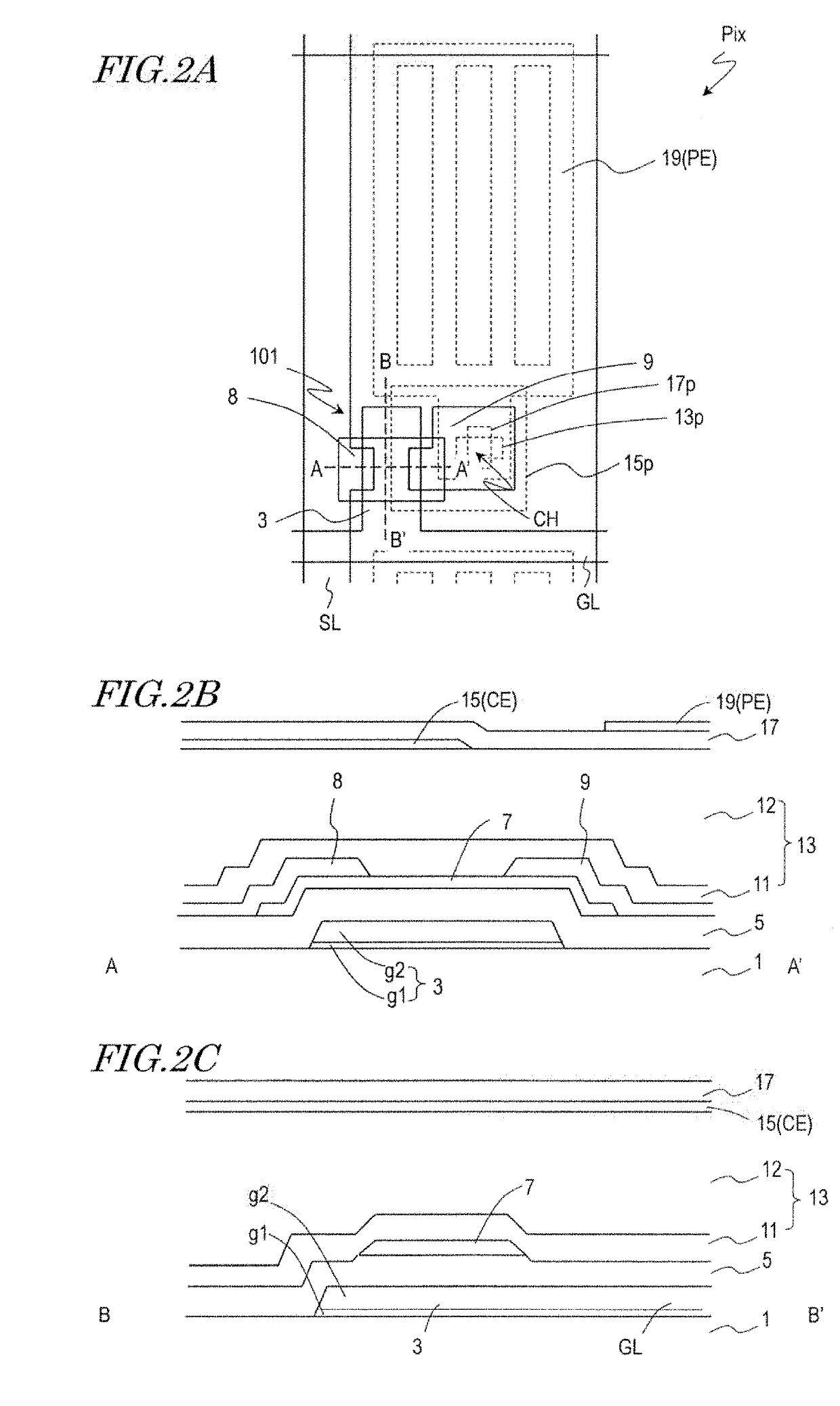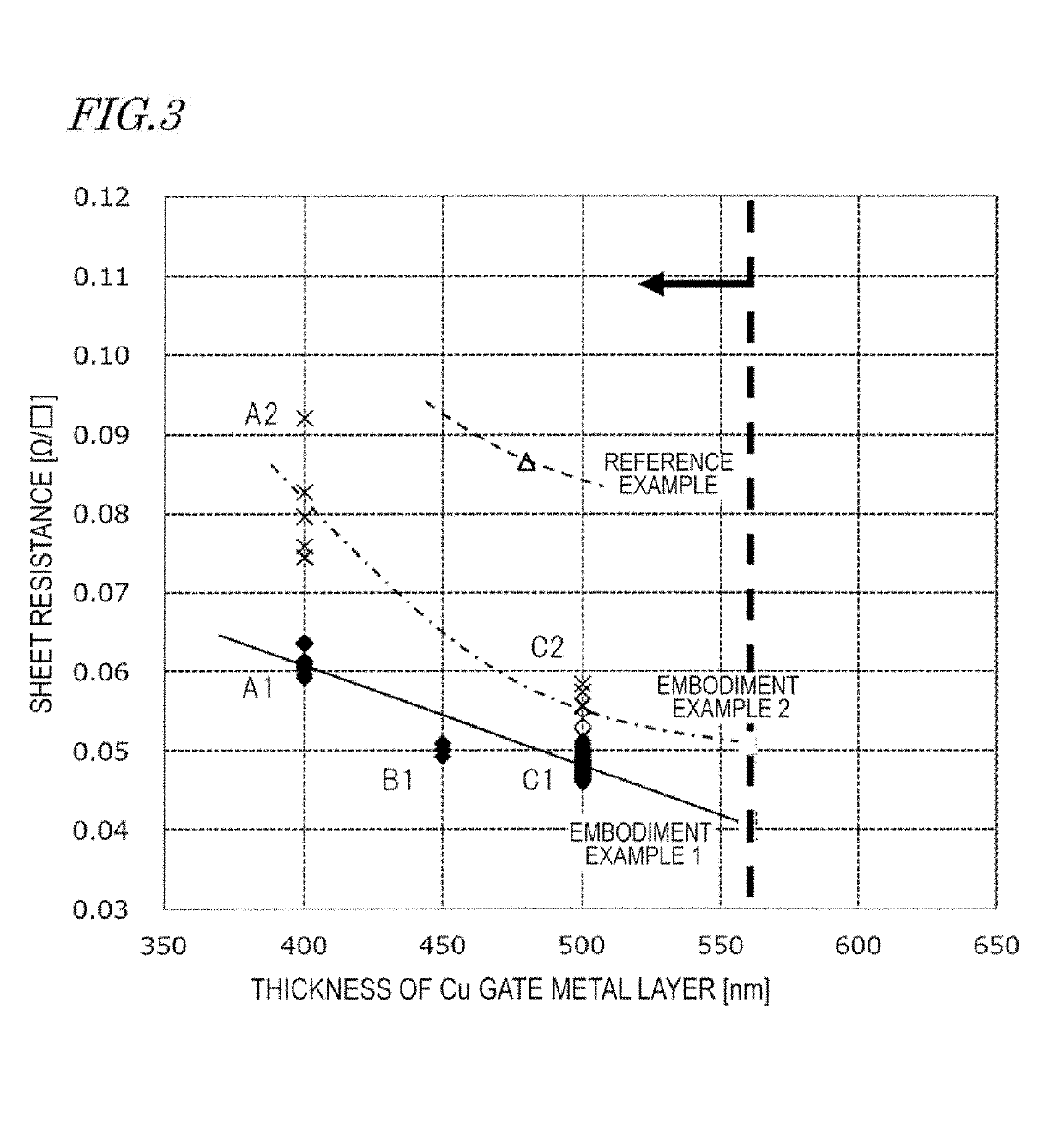Active matrix substrate
a technology of active matrix and substrate, which is applied in the direction of basic electric elements, electrical apparatus, semiconductor devices, etc., can solve the problems of conventionally difficult to keep the sheet resistance of the gate metal layer low, and the sheet resistance of the gate metal layer cannot be reduced to a desired value, so as to improve the adhesion to the surface of the substrate, increase the sheet resistance, and reduce the effect of gate metal layer sheet resistan
- Summary
- Abstract
- Description
- Claims
- Application Information
AI Technical Summary
Benefits of technology
Problems solved by technology
Method used
Image
Examples
first embodiment
[0064]The present inventors made an in-depth study on realizing a wiring structure with which it is possible to achieve both a low sheet resistance and a high adhesion. As a result, the present inventors found that it is possible to improve the adhesion to the substrate surface while maintaining a low sheet resistance by providing a Cu alloy layer having a predetermined composition on the substrate side of the Cu layer. In the present specification, such a structure is referred to as a “Cu / Cu alloy layered metal structure”.
[0065]An active matrix substrate according to one embodiment of the present invention will now be described with reference to the drawings.
[0066]FIG. 1 is a schematic view showing an example of the planar structure of an active matrix substrate 1000 of the present embodiment.
[0067]The active matrix substrate 1000 has a display region DR, and a region (the non-display region or bezel region) FR other than the display region DR. The display region DR includes pixel ...
second embodiment
[0136]FIGS. 9A and 9B are cross-sectional views each illustrating an active matrix substrate of the second embodiment.
[0137]With the active matrix substrate of the present embodiment, the gate insulating layer 5 includes the first oxygen-containing silicon layer a1 in direct contact with the oxide semiconductor layer 7, the second oxygen-containing silicon layer a2 in direct contact with the upper surface of the copper layer g2, and the silicon nitride layer n located between the first oxygen-containing silicon layer a1 and the second oxygen-containing silicon layer a2. The gate insulating layer 5 may further include a silicon oxynitride layer (intermediate layer) b between the silicon nitride layer n and the first oxygen-containing silicon layer a1, as illustrated in FIG. 9B. The specific materials and thicknesses of the layers are similar to those described above with reference to FIGS. 8A and 8B, and will not be further described below.
[0138]In the present embodiment, it is only ...
embodiment example and reference example
[0140]
[0141]Active matrix substrates of Embodiment Examples 1 and 2 and Reference Example were produced and compared against each other in terms of the sheet resistance of the gate metal layer.
Method for Manufacturing Active Matrix Substrate of Embodiment Example 1
[0142]First, a gate metal layer having a Cu / Cu alloy layered metal structure was formed on a glass substrate (thickness: 0.7 mm).
[0143]Next, a gate insulating layer including the second oxygen-containing silicon layer a2, the silicon nitride layer n and the first oxygen-containing silicon layer a1 was formed so as to cover the gate metal layer. In Embodiment Example 1, a silicon oxynitride layer (thickness: 100 nm) as the second oxygen-containing silicon layer a2, the silicon nitride layer n (thickness: 300 nm), and a silicon oxide layer (thickness: 50 nm) as the first oxygen-containing silicon layer a1 were formed in this order on the gate metal layer. A plasma CVD method was used for the formation of these films. When fo...
PUM
 Login to View More
Login to View More Abstract
Description
Claims
Application Information
 Login to View More
Login to View More - R&D
- Intellectual Property
- Life Sciences
- Materials
- Tech Scout
- Unparalleled Data Quality
- Higher Quality Content
- 60% Fewer Hallucinations
Browse by: Latest US Patents, China's latest patents, Technical Efficacy Thesaurus, Application Domain, Technology Topic, Popular Technical Reports.
© 2025 PatSnap. All rights reserved.Legal|Privacy policy|Modern Slavery Act Transparency Statement|Sitemap|About US| Contact US: help@patsnap.com



